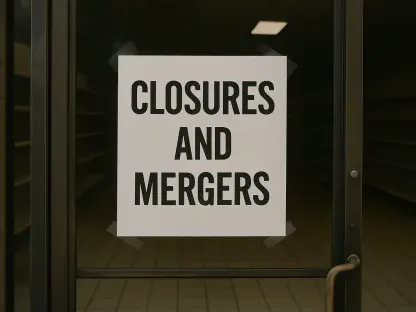The transformation of education in the United States over recent years has been nothing short of remarkable, with virtual schools emerging as a powerful force reshaping how students learn, especially in the wake of the COVID-19 pandemic. Once considered a marginal option for a select few, online education has catapulted into the mainstream, largely due to the seismic shifts brought on by the crisis. The sudden closure of physical classrooms forced millions of families and educators to embrace digital platforms overnight, revealing both the potential and the pitfalls of learning from home. For many, what began as a stopgap measure evolved into a deliberate choice, reflecting a broader desire for flexibility and tailored educational experiences that traditional schools often struggle to provide. As enrollment numbers soar and virtual programs expand across states, the phenomenon raises critical questions about quality, equity, and the future of K-12 education. This exploration delves into the driving forces behind this trend, the challenges it presents, and the lasting impact it may have on the educational landscape.
Rising Enrollment and Mainstream Acceptance
A Dramatic Increase in Participation
The ascent of virtual schools in the U.S. represents one of the most significant shifts in education over the past decade. Data reveals a striking growth trajectory, with the number of virtual public schools nearly doubling from 478 in 2013 to 691 by the 2019-2020 academic year. Programs in states like Georgia and Texas highlight this boom, with thousands of students enrolling annually in institutions such as Georgia Cyber Academy and Lone Star Virtual Academy High School. The pandemic acted as a catalyst, introducing countless families to online learning and, for many, cementing it as a viable alternative. This rapid expansion isn’t merely numerical—it signals a cultural shift toward accepting virtual education as a legitimate and often preferable option for K-12 students. Beyond temporary necessity, the sustained interest suggests that many see long-term value in the autonomy and adaptability that virtual platforms offer, challenging the dominance of traditional brick-and-mortar models.
Regional Variations and Sustained Growth
While the national trend of virtual school growth is clear, regional differences paint a nuanced picture of adoption. In states like Michigan, for instance, a notable percentage of public school students have engaged with at least one virtual course, showcasing how widespread the concept has become. Other areas, such as Massachusetts, maintain smaller but steadily increasing virtual programs, catering to specific student needs. This geographic diversity underscores that the appeal of online learning isn’t uniform but often tied to local policies, infrastructure, and cultural attitudes toward education. As some regions report stable rather than explosive growth in recent years, experts suggest that the pool of families most suited for virtual schooling may already be tapped. Nevertheless, the continued presence of these programs indicates a lasting demand, particularly among those seeking alternatives to conventional classroom settings, ensuring that virtual education remains a significant fixture in the educational ecosystem.
Debates Over Quality and Student Outcomes
Struggles with Academic Performance
The effectiveness of virtual schools remains a hotly contested issue among educators and researchers, with data often pointing to underwhelming results. Studies consistently show that students in full-time virtual settings lag behind their peers in traditional schools, evidenced by a four-year graduation rate of just 65.1%, compared to the national average of 86.5%. District-operated virtual schools perform slightly better than charter-based ones, but the gap remains significant. Experts argue that the online format demands a high degree of self-discipline and parental involvement, which many students lack. Without the structured environment of a physical classroom, distractions abound, and engagement can suffer. This raises serious concerns about whether virtual learning can deliver equitable academic outcomes for the majority, especially as schools grapple with how to replicate the accountability and support systems of in-person education in a digital space.
Benefits for Specific Student Groups
Despite the broader challenges, virtual schools offer undeniable advantages for certain populations, providing a critical alternative where traditional settings fall short. Students facing social anxieties, bullying, or physical health barriers often find online learning to be a safe haven, allowing them to focus on academics without the stressors of a conventional school environment. High schoolers, in particular, benefit from the flexibility to learn at their own pace, which can prevent dropouts among those at risk. The ability to customize schedules and avoid rigid classroom structures appeals to families with unique circumstances, such as frequent relocations or specialized extracurricular commitments. While not a universal solution, virtual education serves as a lifeline for these groups, highlighting the need for targeted approaches that maximize its strengths while addressing its limitations for broader student populations.
Access, Equity, and Operational Realities
Demographic Disparities in Enrollment
A closer look at who enrolls in virtual schools reveals notable demographic trends that raise questions about equity and access. Compared to traditional public schools, virtual programs tend to serve fewer minority and lower-income students, with a slight skew toward female participants. High school students make up a disproportionate share of enrollees, often drawn by the flexibility to balance education with other responsibilities. This pattern suggests that virtual schooling appeals to a specific subset of the population, potentially leaving behind those who might benefit but lack the resources or awareness to participate. Addressing these disparities requires a deeper understanding of barriers—whether technological, financial, or informational—that prevent diverse representation, ensuring that the benefits of online learning aren’t limited to a narrow demographic slice.
Logistical and Financial Hurdles
Running virtual schools presents a complex set of operational challenges that vary widely across states and districts. Costs differ significantly depending on whether programs are developed in-house or outsourced to third-party providers, with some districts facing steep expenses for technology and training. The expiration of pandemic-era federal relief funds has added pressure, forcing many to reassess the sustainability of their virtual offerings. Additionally, the lack of a uniform approach—some states centralize virtual education while others leave it to local districts—creates inconsistency in quality and access. These logistical intricacies highlight the need for strategic planning and investment to maintain virtual programs without compromising educational standards, especially as schools navigate shrinking budgets and evolving technological demands.
Long-Term Implications for Education Systems
Intersection with Broader Educational Shifts
Virtual schools are not an isolated phenomenon but part of a larger wave of change in how education is delivered and perceived. The rise in homeschooling and the expansion of charter school voucher programs intersect closely with online learning, as many families use virtual platforms as a structured homeschooling option. Voucher systems, which allow public funds to support virtual education, further amplify access, reflecting a growing societal push for customization and choice. This trend challenges traditional schools to adapt by offering more flexible curricula or risk losing students to alternatives. The blending of these movements signals a fundamental rethinking of educational delivery, where personalization takes precedence, and rigid, one-size-fits-all models are increasingly questioned in favor of diverse pathways.
Lasting Influence on Traditional Schools
Reflecting on the broader impact, the rapid adoption of technology during the pandemic fundamentally altered traditional education, leaving a legacy that continues to evolve. Brick-and-mortar schools developed robust digital infrastructure under crisis conditions, enabling hybrid learning models like virtual snow days or online courses to become commonplace. These innovations suggest a future where the boundaries between online and in-person education blur, creating a more integrated system. While full-time virtual school enrollment may have stabilized, the pedagogical and technological advancements spurred by this shift proved transformative. Schools adapted by incorporating digital tools into everyday teaching, enhancing accessibility and resilience. Looking ahead, the focus should be on leveraging these tools to improve engagement and outcomes, ensuring that the lessons learned from virtual education’s rise continue to benefit all students through thoughtful integration and evidence-based practices.









